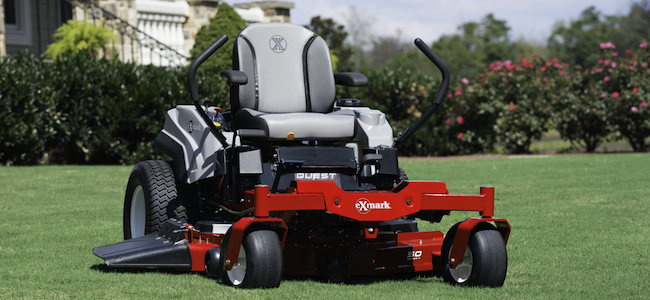
When to start mowing your lawn in the spring depends on your local weather conditions and the kind of weather pattern you’ve experienced. We can’t give you a date, but we can provide guidelines for determining the best time to start mowing your lawn.
Check the Temperature
Look for night-time temperatures consistently above freezing –ideally above 40˚– and soil temperature above 55˚ degrees. If you live in the Midwest, where it’s not uncommon for the weather to swing from winter to spring and back in the course of a weekend, this can take longer than you’d like. Once you can be sure the temperature can be relied on to stay above 40˚ Fahrenheit, then you can start dusting off your lawn mower.
Monitor the Grass
The other thing to consider is the height of your grass. Wait until grass is at least 2 inches tall before mowing. For the first mow, leave it longer, too. Don’t remove more than 1/3rd of the leaf. If you cut the grass too short, you could leave it vulnerable to disease.
Fertilize
Spring is a great time to fertilize your lawn because the young grass soaks up nutrients more efficiently than it does later in the season. If you decide to fertilize this spring, make sure you give your lawn plenty of time to soak up those extra nutrients before you start mowing.
Are You Overseeding This Year?
Overseeding is the process of planting grass seed over existing turf. It’s a great way to patch up any bald spots your lawn may have developed over the winter, while creating a thick, lush lawn. If you are overseeding, you’ll need to plan the start of your mowing season accordingly in order to avoid cutting the young grass when it’s too short and hasn’t yet had chance to put down good roots. Come up with a schedule that includes overseeding, fertilizing, and mowing in such a way that all three of those things can work together, rather than working against each other.
Don’t Cut Wet Grass
Wet grass can be harder to cut efficiently, and it’s more likely to clump together when it has been cut. You’re also more likely to tear it, instead of cutting it cleanly, and torn leaves are more susceptible to disease. If you’re having a rainy spring, it will be better to let the grass go a few extra days than to cut it wet.
Before that First Mow
Before you head out to mow your lawn for the first time, check your mower. Be sure that blades are sharp, belts are in good condition, and that everything is in working order. Dull blades can tear and damage grass, even when it’s dry. Take the time to sharpen or replace your blades.






